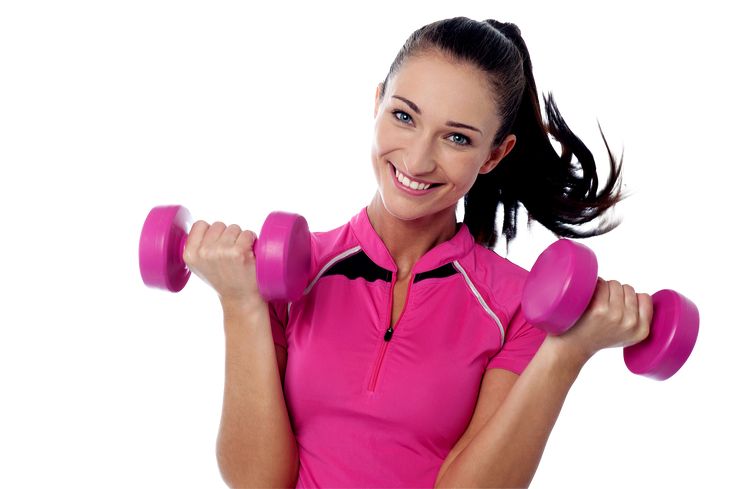Introduction
Fitness is far more than just a number on a scale or the size of your jeans. For women, body fitness is a pathway to improved health, mental clarity, self-confidence, and long-term well-being. Yet, the journey to fitness is often clouded by unrealistic beauty standards, fad diets, and misleading fitness trends.
In today’s world, where strong is the new sexy, women are reclaiming fitness on their own terms — building strength, resilience, and energy through well-balanced routines that support both physical and mental health.
This comprehensive guide dives deep into what women’s body fitness really means, how to approach it holistically, and how women of all ages can embrace fitness as a lifestyle.
Understanding Fitness: It’s Not Just About Looks
Fitness is often misunderstood as a way to “fix” or “change” your body. In reality, true fitness is about what your body can do, not just how it looks. For women, this means:
- Having energy to get through the day
- Building strength to carry children or groceries
- Maintaining mental clarity
- Supporting hormonal balance
- Aging gracefully
- Preventing diseases like osteoporosis, diabetes, or heart conditions
The female body goes through many phases — puberty, menstruation, pregnancy, postpartum, menopause — each with its unique demands. A solid fitness foundation helps women navigate these transitions with strength and grace.
The Pillars of Women’s Fitness
Achieving optimal body fitness requires a combination of several components. It’s not just about cardio or calorie counting — it’s about a balanced, holistic approach.
1. Strength Training
Often overlooked in favor of cardio, strength training is crucial for women.
Benefits include:
- Increased muscle tone and metabolism
- Stronger bones (reduces risk of osteoporosis)
- Improved posture and joint stability
- Enhanced fat-burning even at rest
Myth Buster: Lifting weights won’t make you “bulky.” Women don’t produce enough testosterone to build large muscles like men.
Recommended: 2-3 sessions per week targeting major muscle groups (squats, lunges, rows, presses).
2. Cardiovascular Health
Cardio workouts improve heart and lung health, endurance, and aid in fat loss.
Options include:
- Brisk walking or jogging
- Cycling or swimming
- HIIT (High-Intensity Interval Training)
- Dance fitness or Zumba
Recommended: 150 minutes of moderate cardio per week, or 75 minutes of intense cardio.
3. Flexibility and Mobility
Stretching and mobility work help:
- Prevent injuries
- Improve posture
- Ease muscle soreness
- Enhance range of motion
Incorporate:
- Daily stretching routines
- Yoga or Pilates sessions
- Foam rolling or self-massage
4. Core Strength
A strong core supports everything from balance to back health.
Engage in:
- Planks and bridges
- Pilates-based exercises
- Functional movements like twisting and bending
A strong core is more than abs—it includes your back, hips, and pelvic floor.
5. Nutrition
Fitness goals are made or broken in the kitchen.
Key nutrition tips:
- Prioritize lean protein (chicken, eggs, tofu, legumes)
- Load up on vegetables and whole grains
- Stay hydrated
- Limit added sugars and processed foods
- Don’t fear healthy fats (avocado, nuts, olive oil)
Tip: Eat enough! Undereating slows metabolism and hinders recovery.
Fitness Across the Female Life Cycle
1. Teens and 20s
Focus: Building lifelong habits and healthy body image.
- Combine fun activities (dance, sports) with structured workouts
- Avoid fad diets; eat for fuel and growth
- Learn proper technique and body awareness
2. 30s and 40s
Focus: Strength, endurance, and stress management.
- Begin or intensify strength training
- Manage hormonal changes through balanced routines
- Include self-care to reduce stress and cortisol levels
3. Pregnancy and Postpartum
Focus: Safe, supportive movement.
- Prenatal yoga and low-impact cardio
- Focus on breathing, pelvic floor, and core rehab
- Postpartum recovery should be gradual and guided
Consult with your doctor or a pre/postnatal fitness specialist.
4. 50s and Beyond
Focus: Bone health, mobility, and longevity.
- Strength training is critical to prevent muscle and bone loss
- Low-impact cardio like walking and swimming is ideal
- Stay active to boost mood, energy, and independence
Mental Health and Fitness: The Connection
For many women, exercise is a mental escape as much as a physical pursuit.
Mental benefits of fitness include:
- Reduced anxiety and depression
- Increased self-esteem and confidence
- Improved sleep quality
- Stress relief and mood stabilization
Even a 20-minute walk can release endorphins — your brain’s feel-good chemicals.
Fitness can be a form of self-care, not punishment. It’s about honoring your body, not fixing it.
Common Barriers and How to Overcome Them
1. Time Constraints
Solution: Try shorter workouts (15–30 minutes), home workouts, or active commuting. Consistency matters more than duration.
2. Lack of Motivation
Solution: Set SMART goals (Specific, Measurable, Achievable, Relevant, Time-bound), track progress, or join a fitness group for accountability.
3. Intimidation or Gym Anxiety
Solution: Start with at-home workouts or work with a female trainer. Everyone starts somewhere — your journey is your own.
4. Body Image Issues
Solution: Follow body-positive fitness influencers, unfollow toxic accounts, and shift your focus from appearance to strength, energy, and health.
Fitness Trends for Women in 2025
1. Strength-Based Programs
Programs like CrossFit, weightlifting, and functional training have gained popularity among women for their empowering effects.
2. Online Coaching and Apps
Fitness is more accessible with personalized training apps, virtual classes, and communities.
Top apps: FitOn, Nike Training Club, Sweat, MyFitnessPal
3. Mind-Body Workouts
Yoga, barre, and Pilates continue to grow, promoting core strength, flexibility, and mental focus.
4. Wearable Technology
Fitness trackers (Apple Watch, Fitbit, Oura) help women monitor heart rate, cycle tracking, sleep, and workouts with precision.
Tips for Creating a Sustainable Fitness Routine
- Start Small and Build Gradually
– Consistency beats intensity. - Do What You Enjoy
– Whether it’s hiking, dance, or weights, find joy in movement. - Track Progress
– Use a journal or app to stay motivated and celebrate milestones. - Rest and Recover
– Your body needs rest to grow stronger. Prioritize sleep and recovery days. - Fuel Properly
– Don’t skip meals or under-eat. Nutrition supports energy, performance, and recovery. - Celebrate Non-Scale Victories
– Improved mood, strength, endurance, and confidence matter just as much (if not more) than weight loss.
Inspiring Female Fitness Role Models
- Jessamyn Stanley – Yoga teacher advocating body inclusivity
- Massy Arias – Strength coach and mom promoting functional fitness
- Kayla Itsines – Creator of the Sweat app with global community
- Cassey Ho – Founder of Blogilates, making Pilates fun and accessible
These women prove that fitness is for every body and every lifestyle.
Final Thoughts: Fitness Is Feminine
Fitness for women is no longer about fitting into societal molds — it’s about power, performance, and personal growth. Every woman’s fitness journey is unique, shaped by her goals, body, and circumstances.
Whether you’re lifting weights, running trails, flowing through yoga poses, or dancing in your living room — you’re taking control of your health. And that’s beautiful.
Strong is not just physical. It’s mental. It’s emotional. It’s feminine.
So, lace up those sneakers, grab your water bottle, and start your journey toward a healthier, stronger, more confident YOU.


